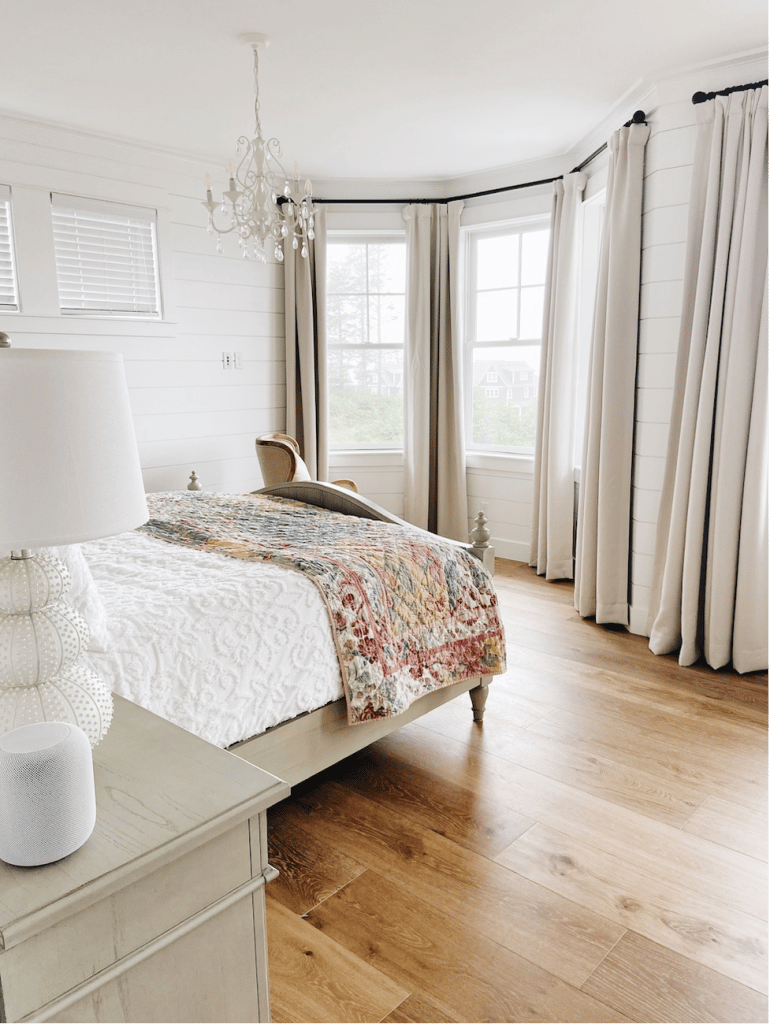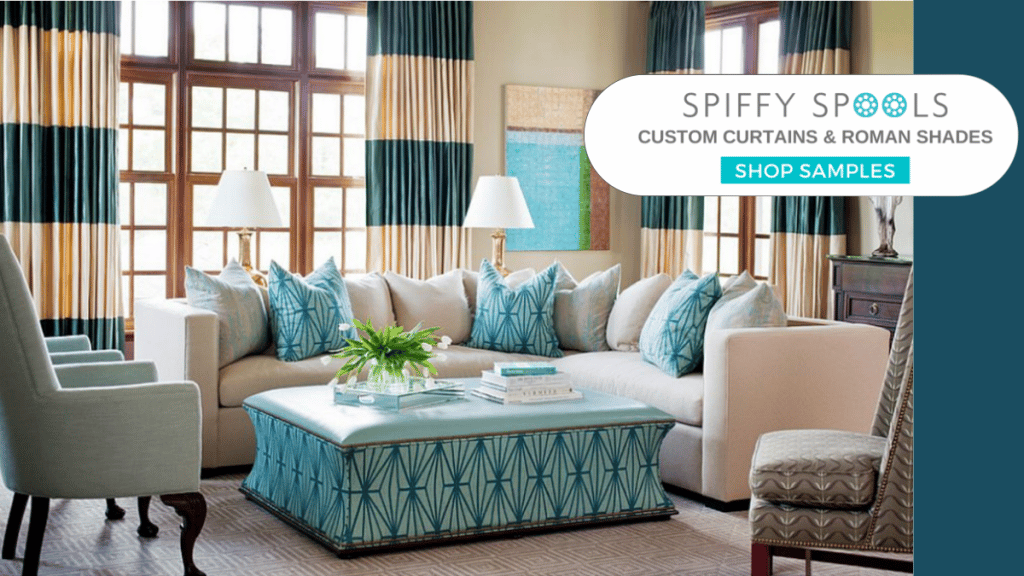Soft and luxurious, custom curtains remain exquisite décor items. It is little wonder that with the vast options of window treatments available in the market, homeowners continue to show strong favoritism towards dressing their windows with curtains.
Apart from being highly functional in providing light control and privacy, curtains offer a great aesthetic value to any space. However, you need to choose and hang your curtains the right way to get the most of the functional and aesthetic value.
In this post, we will look at the important do’s and don’ts of choosing curtains. With this, you can correctly leverage your knowledge to choose the right heading style, fabric, pattern, and color for your home.
Do This
Here are important things you must do when shopping for curtains that provide light control and privacy without compromising your décor style.
1. Measure Length with Precision
Before measuring and buying, you must first decide on the desired length of curtains you want. Floor length draperies can touch the floor, sit an inch above the floor, or puddle on the floor.
Sill-length, on the other hand, can extend up to about six inches below the sill if you want better coverage or just barely brush the sill. Make sure you measure the length precisely to where you want your curtains to sit.
Also bear in mind that depending on the heading style you choose for your drapes, as well as the hardware, the technique to measure length correctly for that style might vary.

2. Measure Width with Accuracy
Nothing looks as plush and luxurious as the rounded pleats on well-made curtains. If this looks like something you envisioned for your window treatments, then you’ve got to get the width measurement right. How do you get the width measurement correctly?
If you’re buying non pinch pleat style drapes, buy drapes that are ideally double the length of your track. So for example, for a track of length 48 inches, buy two curtain panels of width 48 inches each, or one single panel of width 96 inches. This will ensure that when the curtains are mounted, there is enough fullness to create a rich gather. Buying less than the width will not deliver the plush pleats you want when the curtains are closed.
If you have to reduce the width for any reason, ensure you stick to at least 1.5-times the window. Anything less will make your curtains look like a flat sheet from one end of your window to the other when closed.
If you have opted to get custom made pinch pleat styles drapes, ask your supplier to provide you with drapes with a minimum fullness factor of 2.5 times, since pinch pleat drapery needs more fabric.
3. Choose the Right Heading Style
Think of your décor style and frequency of use of your window when choosing the heading style. For traditional décor, stitched-in styles such as French pinch pleats will look great. However, flat panels and newer grommet tops will complement modern interiors better.
If you have to open your windows regularly, heading styles like rod-pockets and back-tabs would be a bad idea because they have restricted movement. Instead, consider choosing styles that hang on clips or rings for easy movement.
4. Choose the Right Lining
Lining behind your curtains makes pleats fuller, delivering the charms that everyone loves to see. Apart from this aesthetic value, it also prevents the curtains from fading because of sunlight and offers more insulation from cold and heat.
For a bedroom, nursery, or home theater, it is advisable to not go for sheer curtains that are chosen for their ability to filter in maximum light. In these rooms, you need to make sure that you can block out as much light as possible and keep the rooms dark whenever needed. Therefore, consider using blackout lining or layer your drapes with custom roman shades to ensure sound insulation and perfect light control.
Blackout linings and fabrics are known to prevent thermal energy loss to about 30%. That means you can have cooler summers and warmer winters with blackout lining.
5. Mount the Hardware Thoughtfully
The length of the pole or track of your curtain should extend to a minimum of six inches beyond both sides of the window frame to have room for drapes to stack without blocking too much of the window. Also, ensure you have the pole as high as possible and never lower than six inches above the frame to deliver an impeccable finishing.
Don’t Do This
Of course, we can’t forget the never-to-do things when choosing draperies. So here are the top mistakes to avoid when shopping for your perfect curtains.
1. Compromise Privacy
One of the primary functions of window treatments is to enhance the privacy of your home, especially in the bedrooms and bathrooms. Therefore, refrain from choosing see-through fabrics where privacy is paramount. You should avoid hanging sheer drapes stand-alone on your bathroom or bedroom window.
2. Choose Impractical Curtain Length
While puddle curtains look plush in a space, they are not ideal for all scenarios. For instance, using such in the kitchen or your children’s room is not practical. It is also not ideal for windows you regularly open or windows with radiators under them. Puddled drapes are also not a good choice for high-traffic areas in your home. So, when deciding on your curtain length, align both the practical and aesthetic needs in your home.
Similarly, short curtains often look too casual for a formal space like a reception room or a dining room. They might be suited for kitchens and bathrooms, but are best avoided in rooms that need a bit of formal vibe.
3. Choose High-Maintenance Fabrics
Of course, if you have a great maintenance plan, you can choose high-maintenance fabrics for your curtains. However, if you want to avoid too much fuss, do not opt for delicate fabrics like silks and velvets that need careful usage and maintenance. Fabrics like velvets and silks for the bathrooms, kids’ rooms, kitchens, and other humid and dusty areas are a no-no.
Install Curtains Straight from the Box
You should never hang curtains without ironing and pleat-setting. Take the time to iron, fold the curtains at the pleats gently, and then tie them loosely with bands in three to four positions. Then, leave them hanging like this for two weeks before you remove the bands.
With this, the pleats will look well-rounded without the curtains flaring at the bottom. You can fast-track the process by steam ironing the pleats in the folded position and hanging them for only two days.

